Results 7,731 to 7,740 of 12094
Thread: Anandtech News
-
01-10-18, 12:22 PM #7731
Anandtech: Corsair at CES 2018: Dark Core RGB SE and MM1000Qi - Wireless Charging Mou
LAS VEGAS, NV -- At CES 2018, Corsair announced its first wirelessly charged mouse, the Dark Core RGB SE, and wireless charging mouse pad, the MM1000 Qi.
We first heard of Corsair’s wireless charging efforts at Computex 2017, when it was still a work in progress. Starting with the mouse, the Dark Core RGB SE is an all-new design from Corsair. It’s a right-handed design with an interchangeable, magnetically attached grip plate on its pinky side. Its real selling point is, of course, its built-in Qi charging module, which wirelessly recharges the mouse’s 24 hours of battery life. The mouse uses low-latency 2.4GHz Bluetooth for connectivity and boasts a 16,000-DPI optical unit for a sensor. Its nine button (Omron switches – 50M clicks) and three-zone RGB lighting are programmed through Corsair’s unified driver, CUE, but the mouse has its own memory to store the settings. The mouse includes two interchangeable side grips to fit your grip and play style.
What’s a wirelessly charged mouse without a wireless charging mousepad? The MM1000 Qi is Corsair’s new Qi-equipped mouse pad. Marked in at the top-right corner of this 350 x 260 mm hard mat is a spot where you can park your Dark Core SE for charging. There is a built-in LED indicator which displaying the charging status at a glance. With Qi, you don’t get the ability to charge while the mouse is moving, but you do get the benefit of being able to charge any Qi-compatible device, such as a smartphone. The MM1000 Qi even comes with a Qi charging dongle, complete with adapters, in case your smartphone doesn’t have it built-in. If you have more devices to charge, or just for convenience’s sake, the pad also has a USB 3.0 pass-through.
Rather confusingly, there is a non-SE version of the Dark Core RGB that doesn’t have wireless charging but is still wireless. Both mice can also run in a wired mode with an included cable. The two versions of the Dark Core RGB and the MM1000 Qi will be available starting this month at $80 (Dark Core RGB), $90 (Dark Core RGB SE), and $80 (MM1000 Qi).
Gallery: Corsair Dark Core RGB SE and MM1000 Qi GalleryCorsair Dark Core RGB Wireless Mouse Dark Core RGB Dar Core RGB SE Sensor PMW3367 (Optical) DPI Up to 16,000 DPI Ambidextrous No (right-handed only) Switches Omron (main mouse buttons only) Polling Rate 1,000 Hz Lighting 3-zone RGB 16.8M colors Buttons 9 Software Corsair CUE Cable Wireless / USB Dimensions (H x W x D) 126.8 x 89.2 x 43.2mm (5.06" x 3.51" x 1.7") Weight 128g Price / Warranty $80 / 2 Years $90 / 2 Years Wireless Charging No Yes 





Related Reading:- Razer Reveals Mamba HyperFlux Mouse: No Battery, Wireless Charging
- Cherry Announces the MW 4500 Mouse with 45° Palm Rest, 1200 DPI Sensor
- Logitech Boosts Precision of G203 Prodigy Mouse to 8000 DPI via Firmware Update
- Razer reveals Basilisk Mouse: Made for First Person Shooters
Leon Chan contributed to this Report.
More...
-
01-10-18, 12:22 PM #7732
Anandtech: Acer Unveils Nitro 5: 15.6-inch Gaming Laptop with AMD Ryzen Mobile & Rade
LAS VEGAS, NV — Acer this week announced its first modern laptop that uses an AMD processor and an AMD Radeon discrete graphics chip. The Nitro 5 is a multimedia-focused notebook that will be available this April in various configurations targeted at people with different budgets and needs.
AMD’s renaissance in mobile is starting to gain traction. Over the past couple of months, Acer and HP released their mainstream laptops based on AMD's Ryzen Mobile APUs, whereas ASUS set the stakes high with its ROG Strix GL702ZC gaming machine packing desktop-class Ryzen 7 and a discrete Radeon RX580. Acer’s Nitro 5 will sit between mainstream and high-end gaming machines, offering affordability of the former and providing higher performance levels when equipped with a discrete GPU.
The Acer Nitro 5 (AN515-42) comes in black plastic chassis with multiple red accents and a carbon fiber texture on the back to emphasize its gaming nature. The laptop is outfitted with a 15.6” IPS FHD display, which is the most popular resolution among gamers, based on Steam Hardware Survey as of December 2017. Acer does not talk about dimensions or weight, but the laptop looks rather bulky.
Inside, the Nitro 5 features an AMD Ryzen Mobile processor with up to four x86 cores and AMD Vega iGPU (192 – 640 stream processors) as well as a Radeon RX560 discrete GPU with up to 4 GB of GDDR5 (select SKUs only). The APU and GPU will be accompanied by up to 32 GB of DDR4 RAM and a 512 GB SSD, but the manufacturer does not elaborate on exact data transfer rates and models. In fact, when it comes to details, this is what Acer’s press release is a bit short of because the Nitro 5 is three months away and the manufacturer does not announce all the specs just now. It is noteworthy that to enable monitoring and performance tweaking of processor and graphics, Acer will pre-install its NitroSense software.
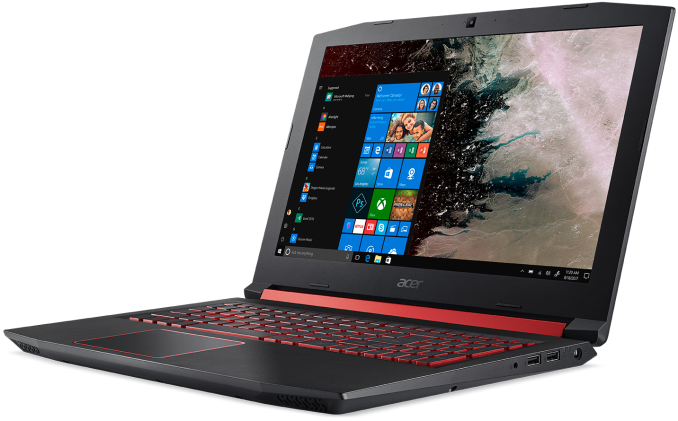
As for connectivity, everything looks pretty standard on the Nitro 5: a 2×2 802.11ac Wi-Fi + Bluetooth module, one USB 3.1 Gen 1 Type-C port, one USB 3.1 Gen 1 Type-A connector, two USB 2.0 headers, a GbE port, an HDMI output and an SD card reader. The audio sub-system of the Acer Nitro 5 is comprised of a TRRS connector, stereo speakers as well as Acer TrueHarmony and Dolby Audio Premium software enhancements.
As reported above, the Acer Nitro 5 will be available in Europe and North America in April. In EMEA, prices of the laptop will start at €1099, whereas in the U.S. the cheapest model will retail for $799. Considering such a huge difference between prices in America and Europe, expect a significant difference in configurations as well.Acer Nitro 5 Laptops at a Glance AN515-42 Display Diagonal 15.6" Resolution 1920×1080 Type IPS CPU AMD Ryzen Mobile with up to four cores Graphics Integrated AMD Vega Discrete AMD Radeon RX560 (Polaris) (select SKUs only) RAM Capacity up to 32 GB Type DDR4 (frequency unknown) Storage up to 512 GB SSD Wi-Fi 802.11ac Wi-Fi module (unknown vendor) Bluetooth 4.x USB 1 × USB 3.0 Type-A
2 × USB 2.0 Type-A
1 × USB 3.0 Type-COther I/O HDMI 2.0a, webcam, TRRS connector for audio, speakers, microphone, SD card reader Price Starting from $799 in the U.S., €1099 in EMEA
Gallery: Acer Nitro 5: a 15.6-inch Gaming Laptop with AMD Ryzen Mobile & Radeon RX560_05_thumb.jpg)
_04_thumb.jpg)
_03_thumb.jpg)
_02_thumb.jpg)
_01_thumb.jpg)

Related Reading:- Ryzen Mobile is Launched: AMD APUs for Laptops, with Vega and Updated Zen
- Ryzen Mobile Now On Sale: HP’s ENVY X360
- More Ryzen Mobile: Acer Swift 3 with 2700U and 2500U Listed, From $750
- AMD Makes a Surprise Appearance: Ryzen Mobile with Qualcomm LTE
- ASUS Launches ROG Strix GL702ZC: 17.3-inch, Eight-Core AMD Ryzen 7, Radeon RX580
More...
-
01-10-18, 03:04 PM #7733
Anandtech: ASUS Unveils ProArt PQ22UC OLED Monitor: 4K, 99% DCI-P3, 0.1 ms Response T
LAS VEGAS, NV — ASUS has announced its first professional OLED display at CES 2018. The ProArt PQ22UC features a 4K resolution and covers 99% of the DCI-P3 color space, making it a good solution for professionals who need this spectrum. ASUS says that the compact dimensions and light weight of the device make it a good option both for post-production and on-set routines.
The ASUS ProArt PQ22UC is based on a 21.6” 4K RGB stripe OLED panel made by JOLED (a joint venture between Sony and Panasonic) using the company’s printing method. The panel features a 3840×2160 resolution, a contrast ratio of 1,000,000:1, and a response time of 0.1 ms. The monitor can reproduce 1.07 billion colors and covers 99% of the DCI-P3 color space. ASUS does not say anything about the brightness of the panel, 3D LUT, sRGB, and Rec. 2020 support. The company does say that the “dynamic range is wide enough to support HDR content”, so the look-up tables are there, but it is unknown whether the PQ22UC supports the HDR10 or other high dynamic range specs. In any case, HDR requires relatively high brightness levels and luminance is not a strong side of the OLED technology in general, so the actual HDR experience on the PQ22UC is something that remains to be seen. Meanwhile, 3D LUTs can be used on set to emulate specific display devices for quality assessments.
ASUS positions the ProArt PQ22UC as a professional solution for those on the go, which is why it uses USB Type-C and micro-HDMI inputs (no word on exact protocols, but DP 1.2 and HDMI 2.0x are likely) to save space. The display features an angled stand that can regulate height & tilt and can be detached and folded flat for easier transportation.
The display is factory calibrated to Delta E?2 color accuracy and comes with the ASUS ProArt Calibration feature that saves color parameter profiles to the monitor rather than to a host PC, which is particularly useful for a mobile solution that can be attached to different computers.Brief Specifications of the ASUS ProArt PQ22UC PQ22UC Panel 21.6" OLED Native Resolution 3840 × 2160 Maximum Refresh Rate 60 Hz (?) Response Time 0.1 ms (black to white) Brightness typical: unknown
minimum: 0.0005 cd/m² (minimum)Contrast 1000000:1 Viewing Angles 178°/178° horizontal/vertical Pixel Pitch 0.1245 mm² Pixel Density 204 ppi Display Colors 1.07 billion Color Gamut Support DCI-P3: 99%
sRGB/Rec 709: 100% (tbc)
Adobe RGB: ?
SMPTE C: ?
Rec2020: ?Stand Tilt and height adjustable Inputs 1 × USB Type-C (DP 1.2?)
1 × mini HDMI (2.0a? 2.0b?)PSU External Launch Price & Date unknown
ASUS has not released any details regarding pricing and availability timeframes of the ProArt PQ22UC. Meanwhile, JOLED says that its 21.6” 4K OLED panels are in production.
Related Reading:- Dell’s Ultrasharp 30-inch 4K OLED Now On Sale: UP3017Q for $3500
- Dell Demonstrates 30-inch 4K OLED Display
- ASUS ProArt PA32U Display: 4K, 1000 Nits Brightness, 95% DCI-P3, 85% Rec. 2020
- EIZO Announces ColorEdge Prominence CG3145: 4096x2160, 98% P3 and HDR10
More...
-
01-10-18, 03:04 PM #7734
Anandtech: be quiet! Releases The Straight Power 11 PSU Line at CES 2018
LAS VEGAS, NV -- After three years in the market, it was high time for the Straight Power 10 line to meet its successor. In PSUs technology doesn't move as fast as it does in GPUs and CPUs, however from time to time brands and manufacturers still have to refresh their offerings in order to keep up with the current trends and users' needs. For example, the recent RGB madness forced many companies to redesign a number of their PSU offerings, and the advances in digital control circuits also brought the same effect, but on a much smaller scale.
Be quiet! has a large portfolio of products, including PSUs, cooling solutions, and chassis, with all of them having one main purpose in mind: to keep the system's overall noise output as low as possible. The majority of users in Germany are highly sensitive to noisy PC components, and because Be quiet! is a German company, it has to meet local demand. Nevertheless, more and more users worldwide care now about silent computing, so components that keep noise output low are becoming popular. The days that noisy PC systems were perceived as a normal situation are long gone, thankfully.
The new Straight Power 11 Line consists of six members with capacities ranging from 450W to 1kW. The prices in Europe (including VAT) start from 93€ for the lowest capacity member and go up to 185€ for the strongest model. In the US market, when this line will become available, we expect to see around the same numbers but in dollars. According to our experience so far, usually, the conversion ratio between EU and U.S. prices for IT components is one to one, despite the fact that the Euro and USD don't have the same value.
Protection features include Over Temperature Protection, Short Circuit Protection, Surge and Inrush Current Protection. A notable item it does not include is the Over Current Protection on the 12V rail(s). The OEM for these units are FSP and are rated at 80 Plus Gold efficiency.
The main features of the Straight Power 11 units are the following:
- SilentWings 3 fan with 135mm diameter
- Big funnel-shaped fan opening of the PSU case for high airflow intake
- Wire-free on the DC side for enhanced cooling and longevity of components
- Fully modular cable design
- 80 PLUS Gold Efficiency
- Four+12V rails
- Up to six PCI-Express connectors
- Japanese 105°C electrolytic caps (no mention though to the exact model numbers
- ErP and Energy Star 6.1 ready
- 5-year warranty
- Product conception, design and quality control in Germany
Related Reading:be quiet! Straight Power 11 450W 550W 650W 750W 850W 1kW Combined Amps/Watts +3.3V 120W 130W 140W 150W 150W 150W +5V +12V 37.5A / 450W 45.8A / 549.6W 54.1A / 649.2 62.5A / 750W 70.8A / 850W83.3A / 1kW-12V - - - - - - +5Vsb - - - - - - Total Power 450W 550W 650W 750W 850W 1kW Connector Type 450W 550W 650W 750W 850W 1kW ATX 24 Pin 1 EPS 4+4 Pin 1 2 PCIe 6+2 Pin 2 4 4 6 SATA 9 11 4P Molex 3 4 Floppy 1 - CoolerMaster at CES 2018: New MasterWatt V and Maker Power Supplies with Connect v2.0 and Overlay.live Telemetry
- Best Power Supplies: Holiday 2017
- Riotoro at CES 2018: New Full-Tower and Mid-Tower Cases, new Enigma G2 Power Supply
- The $80 Power Supply for Almost Everyone: The Corsair TX550M 80Plus Gold PSU Review
Contributed by Aris Mpitziopoulos
More...
-
01-10-18, 05:16 PM #7735
Anandtech: D-Link Expands Covr Mesh Networking Lineup, 802.11ax Routers in 2H 2018
LAS VEGAS, NV — D-Link entered the mesh networking market with its Covr lineup of devices last year. Most vendors had launched their mesh platforms with a kit comprised of multiple units of very similar hardware and industrial design. Instead, D-Link opted to put firmware with mesh networking features (based on Qualcomm's Wi-Fi SON) into devices with traditional form factors. The end-point hardware was different based on the backhaul scenario (powerline or Wi-Fi). At CES 2018, D-Link is adding new members to the Covr lineup. This time around, they are adopting the same playbook as other whole-home Wi-Fi systems / mesh kits.
Gallery: D-Link Covr C1203 Dual-Band Mesh Networking KitThe Covr C1203 is a dual-band dual-concurrent AC1200 mesh system similar to the one launched by Linksys under the Velop brand a few days back. Essentially, it is an approach to bring down the price of mesh systems in order to broaden adoption. The Google Wi-Fi system is one of the top-selling kits in the market, and we now see both Linksys and D-Link target the same AC1200 specifications to compete better in that market segment. That said, D-Link is also introducing the Covr 2202 tri-band system with a dedicated backhaul channel. The Covr 2202, despite being tri-band, is still an AC2200 kit. It does not adopt the high-end 4x4 backhaul channel used in the Netgear RBK50 Orbi kit. Its units are taller than the members of the dual-band Covr C1203 to optimize the antenna positioning. The Covr kits also support Alexa. It is important to note that the mesh systems coming out at CES 2018 from different vendors are still using the old Qualcomm Wi-Fi SON platform (IPQ 40x8/9) with different options. The AC2200 2-pack COVR-2202 will become available in Q2 2018 for $320. The AC1200 COVR-C1203 will come in a 3-pack later this quarter for $250._(back)_thumb.png)
_(front)_thumb.png)
_(side_left)_thumb.png)
_(side_right)_thumb.png)
_image_3_thumb.png)
Gallery: D-Link Covr 2202 Tri-band Mesh Networking System_(back)_thumb.png)
_(front)_thumb.png)
_(side_left)_thumb.png)
_(side_right)_thumb.png)
802.11ax Sneak Peek
D-Link also took the opportunity at CES 2018 to give a sneak peek at their plans for the 802.11ax. The main silicon vendors have launched both client and access point silicon over the last year (Qualcomm in February 2017, Broadcom in August 2017, and Intel earlier this week).
D-Link plans to release two 802.11ax routers in the second half of 2018 - the dual-band DIR-X6060 is an AX6000 router, and the tri-band DIR-X9000 is an AX11000 router. Both routers support MU-MIMO (4x4). The WAN port is NBASE-T (with 2.5 Gbps support) and there are four 1Gbps ports. Pricing was not announced. Given the fact that D-Link's CEO lent a quote for Broadcom's 802.11ax press release, we assume that both the AX11000 and AX6000 are using Broadcom's chipsets.
DIR-2680 McAfee Secure Home Router with an Intel Chipset
D-Link also released a standalone AC2600 router (the DIR-2680) with an interesting form factor. The cube-shaped router is powered by the Intel Home Wi-Fi Chipset WAV500, something of a rarity in retail routers sold in the North American market. On the firmware side, we have the McAfee Secure Home Platform for managing Internet security across all the local network devices.
The router will come to market in Q2 2018. Pricing was not announced.
IP Cameras
D-Link also announced a host of cameras. Market trends are showing a clear consumer preference for wire-free cameras (ease of installation being the primary advantage). D-Link has recognized this and come out with the IP65-rated DCS-2802KIT with two-way audio, 16ft. night vision, and 1080p recording capabilities. Both cloud and local storage are supported, and Google Assistant, Alexa, and IFTTT are available as third-party integration capabilities. D-Link claims that the rechargeable battery can last up to 11 months, but that obviously depends on how often the camera detects motion or sound and triggers recording. There is also a LTE camera with similar capabilities (DCS-1820LH) that uses Verizon's network. The only difference compared to the DCS-2802KT is the 113 degree FoV (compared to 140 degrees in the wire-free version) and external power.
The wire-free camera comes with a base station that can support multiple cameras (similar to the Netgear Arlo). Both SKUs are expected to ship in Q2 2018. The LTE camera will be priced at $300, while the DCS-2802KT is priced at $250 for a single camera and the base station. A 2-camera kit is available for $350, and each additional camera will cost $220.
D-Link also introduced new Wi-Fi cameras in the traditional form factors. They are set to go on sale this quarter. The DCS-8010LH is a 720p camera priced at $60, while the DCS-8300LH (1080p) is priced at $90, and the DCS-8525LH (1080p, with pan and tilt) is priced at $120. All of them come with the option to record to local and/or cloud storage. It integrates with popular smart home services (Alexa, Google Assistant, and IFTTT). The mydlink app can be used to monitor the feeds. Cloud recording will also be available. The pricing for the subscription plans will become available closer to launch.
More...
-
01-10-18, 05:16 PM #7736
Anandtech: In Win at CES 2018: New E-ATX 915 Chassis with USB 3.1 Gen2 Type-C
LAS VEGAS, NV — Premium chassis manufacturer In Win have showcased a brand new E-ATX offering at their booth at CES 2018, the new 915 full tower. The new 915 hasn't got an official product page as of yet, but the current specifications of this premium full-tower solution are currently on display at the In Win booth.
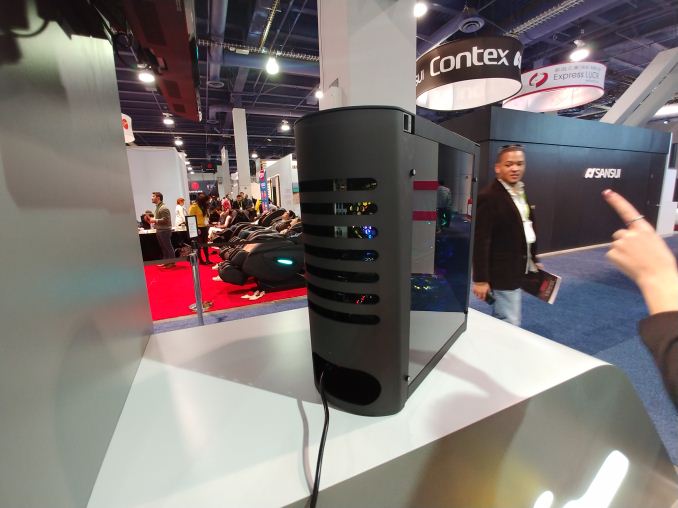
The In Win 915 features full aluminum construction with tinted tempered glass side panels and features a new unique curved design. The 915 also has a top panel which can be automatically raised to increase airflow when the system requires the extra cooling capability due to intensive tasks and tasks such as gaming. Supported is a plethora of form factors ranging from E-ATX (native size) all the way down to mini-ITX and in total, the 915 has room for up to eight expansion slots. As you would expect with a full-tower chassis, the In Win 915 has support for graphics cards up to a maximum of 308mm in length with the HDD tray installed or 410mm without.
The front panel I/O features a single USB 3.1 10Gb/s Type-C port with a duo of USB 3.0 ports available. In relation to cooling options, the 915 has room for three 120/140mm fans in the front, a single 120mm in the rear, three 120/140mm in the top and up to twp 120/140mm fans in the bottom. Water cooling is also supported as expected with room for a 280/360mm radiator in the front, a 120mm radiator in the rear, a 280/360mm radiator with a maximum of 45mm clearance in the top, as well as space for a 240/280mm radiator in the bottom. CPU heatsinks with a maximum height of up to 164mm can be installed so tower heat sinks such as the Noctua NH-D15 and be quiet! Dark Rock models are easily supported.
Pricing and availability of the In Win 915 are currently unknown at the time of writing.
Related Reading:- Cooler Master at CES 2018: New MasterAir G100M and MA410M, MasterLiquid ML240 SMART CPU Coolers
- Best Power Supplies: Holiday 2017
- DeepCool Releases Quadstellar Four-lobed Chassis: 'Smart' Case, Unique Shape
- FSP Releases CMT510 Mid-Tower Chassis: Tempered Glass and RGB Aplenty
- Cooler Master at CES 2018: New MasterWatt V and Maker Power Supplies with Connect v2.0 and Overlay.live Telemetry
More...
-
01-10-18, 06:05 PM #7737
Anandtech: Cooler Master at CES 2018: Aimpad’s Analog Keyboard Technolgy Found in Coo
LAS VEGAS, NV — During CES 2018 this week, Cooler Master announced that it’s coming to market in one of its new keyboards, the MK851 which features Aimpad's analog input technology.
Cooler Master MasterKeys MK851
The new MasterKeys MK851 features the newly implemented analog input technology which is centered around eight specific analog keys, including the WASD keys. These keys are pressure sensitive, which give better control as opposed to the straightforward on/off motion switch on a traditional keyboard. An example would be in a driving game, the amount of pressure applied to the accelerator could be dependant on how hard the key has been pushed. Due to this, it allows users to have more control and make minor adjustments when taking things like corners. One major benefit is not having to repeatedly tap keys to make adjustments, these can be done via the amount of pressure applied to the key itself.
Cooler Master’s official press release actually describes the technology in a similar way:
"Traditional keyboards act like an on/off switch where keys are actuated then released. With Aimpad activated, the MK851 keys function like a gas pedal. The result is more control, especially when driving vehicles, making slight adjustments, or course corrections without having to continuously tap keys. Instead, press down slightly for smooth control."
Putting it quite simply, instead of binary digital input (on/off), analog input gives you gradations of pressure which allows for a myriad of control throughout the total of a keypress.
Due to the analog input technology on the MasterKeys MK851, this model is only available in Cherry MX Red switches, however, the MasterKeys MK850 does not have the Aimpad technology but to compensate this, this model will be available in Cherry MX blue and brown switch types.
Currently, there is no word on pricing, but Cooler Master said in a release that they’ll launch in Q2 or Q3 of this year. Hopefully, we should have more details later this week at CES.
Related Reading:- Best Mechanical Keyboards: Holiday 2017
- ASUS at CES 2018: ROG Strix Flare Keyboard and the ROG Spotlight Lights Up Vegas
- The Azio Retro Classic Mechanical Keyboard Review: Eyecatching, But Stiff
- Gigabyte Launches Splash-Proof AORUS K9 Optical Keyboard with Infrared Switches.
- Razer Announces BlackWidow Ultimate Keyboard: IP54 Dust & Splash Resistant Mechanical Keyboard
Seth Colaner contributed to this report
More...
-
01-10-18, 07:38 PM #7738
Anandtech: Phison at CES 2018: Thunderbolt SSDs, Second-Gen NVMe Controllers
LAS VEGAS, NV — At CES, SSD controller vendor Phison is showing off a range of controller ICs and drive reference designs that are close to hitting the shelves.
Phison's second generation of NVMe SSD controllers has been on the roadmap for quite a while, but now the products are starting to become a reality. The PS5008-E8 and its DRAMless -E8T variant are Phison's solution for the emerging low-end NVMe product segment. These controllers will be used with 3D TLC NAND flash memory, and their performance will be limited by the use of a PCIe 3 x2 interface instead of the x4 interface used by high-end NVMe drives. The DRAMless E8T controller supports the NVMe 1.3 Host Memory Buffer (HMB) feature to offset the random I/O performance hit that DRAMless SATA SSDs suffer from. The E8 series is in mass production using UMC's 40nm fabrication process. MyDigitalSSD has already started shipping their SBX SSD using the E8 controller, and many other brands will soon be shipping products using the E8 or E8T.
Phison's PS5012-E12 controller is their high-end replacement for the current E7 controller, and it promises to bring much higher performance: over 3GB/s sequential transfers when paired with 64L 3D TLC NAND. Random reads and writes can hit 600k IOPS at high queue depths. It looks like this time around Phison will be much more competitive at the high end as NVMe SSDs start closing in on the limits of a PCIe 3 x4 link.
Phison is also showcasing their reference designs for portable Thunderbolt 3 NVMe SSDs. Portable SSDs are high-performance alternatives to USB thumb drives, and typically incorporate a SATA SSD controller behind a USB to SATA bridge. This is more expensive than a single-chip USB flash controller, but puts them in an entirely different league for performance and capacity. Most SATA-based portable SSDs internally use a mSATA or M.2 SATA module. A few products even use two SATA controllers in a RAID0 configuration to offer higher performance: we've tested the SanDisk Extreme 900 and Netac Z5. Phison's Thunderbolt 3 SSDs will blow past all of them. Since these drives simply put a Thunderbolt 3 controller and a M.2 NVMe SSD in a portable housing, it's trivial for vendors to create products based on any of Phison's three NVMe controller options, but the most common configuration to hit the shelves will be with the cheapest E8 controller. Patriot is already showcasing their version of this design.
In addition to the Thunderbolt 3 SSDs, Phison is also showing SATA-based Portable SSD designs using one or two of their DRAMless S11 controllers, which was their first controller to support 3D TLC NAND.
For the mobile market, Phison is also demonstrating their embedded UFS solution for high-performance storage in smartphones and tablets. The new PS8313 controller supports twice the capacity of their current PS8311 thanks to the addition of a second flash interface channel, and substantially higher performance with a two lane host interface.
The upcoming PS8229 SD card controller will support the new features of the SD 6.0 standard and meet the requirements for the A2 application performance class when used with a SD 6.0 capable host. This controller is expected to be ready in Q2.
Gallery: Phison at CES 2018: Thunderbolt SSDs, Second-Gen NVMe Controllers





More...
-
01-11-18, 08:29 AM #7739
Anandtech: Sony Demos Prototype of ‘Full Spec HDR 8K Display’ with 10,000 Nits Lumina
LAS VEGAS, NV — Sony demonstrated a prototype of its 8K display with a peak brightness of 10,000 nits at CES 2018. The company did not disclose when it plans to commercialize the product, if at all. While the display’s main feature is extremely high luminance, it packs a bunch of other important technologies, including a new SoC and a new method to keep the contrast ratio high.
Sony calls the prototype it demonstrated at its CES 2018 press conference the “X1 Ultimate Full-Spec HDR 8K Display”. The 85” device with a 7680×4320 resolution relies on an unknown display technology and an undisclosed backlighting system to enable a peak luminance of 10,000 nits.
To put the 10,000 nits number into context. Contemporary high-end UHDTVs offer peak brightness at 1000 – 1500 nits; to get the Ultra HD Premium logo on a TV, the device should have a peak luminance between 540 and 1000 nits (subject to black level performance) and VESA’s DisplayHDR certification currently tops at 1000 nits (black level performance has to be met to get the badge). Then, there is Dolby’s Pulsar reference monitor for Dolby Vision post-production with a peak brightness level of 4000 nits. So, 10,000 nits is a lot. In fact, the Dolby Vision specification supports maximum luminance of 10,000 nits.
A big question is whether this is something that is eagerly awaited by the industry in the foreseeable future because in addition to peak luminance, display panels need to properly support large color spaces, but clearly this is Sony’s technological achievement.
It's interesting to note though that while the most eye-catching aspect of the prototype set is its brightness, that's not the only reason Sony is showing off the set at CES. The display is also a vehicle to show off the company's latest X1 picture processor, in this case being equipped with a pre-production version of Sony’s X1 Ultimate processor that features two times higher “real-time processing power” compared to the current-gen X1 Extreme. The latter is known to support multiple HDR-branded video post-processing techniques, so it is logical to expect its successor to further develop such capabilities.
While high luminance and a wide color gamut are important, contrast ratio is a yet another factor required for a stunning picture on a screen. When it comes to displays with LED backlighting (and I doubt that we are dealing with an OLED-based prototype), precise control of LEDs and calibration of their light beams is a method used by manufacturers to achieve deep blacks today. Several years ago, Sony already demonstrated a 4K display with a 4000-nits brightness featuring its Backlight Master Drive technology that ensured both incredible luminance and a high contrast ratio with its 1000 independently controllable lighting zones. Since technologies tend to evolve, we may be looking at a successor of the Backlight Master Drive tech to be used on the "X1 Ultimate Full-Spec HDR 8K Display”, but a linear growth of the number of controllable lighting zones is hardly the only option that Sony has at hands.
Sony naturally does not disclose any additionally technical details about its prototype. As such, the key takeaways here is that the company had developed an ultra-bright backlighting along with a way to keep the display’s contrast ratio at a decent level as well as a processor that can handle content with peak luminance of 10,000 nits and presumably in a wide color spectrum.
Related Reading:
- Philips Demos 328P8K: 8K UHD LCD with Webcam, Docking, Coming in 2018
- Dell’s 32-inch 8K UP3218K Display Now For Sale: Check Your Wallet
- Dell Announces UP3218K: Its First 8K Display, Due in March
- VESA Announces DisplayHDR Specification: Defining HDR Capabilities In Performance Tiers
- Panasonic Develops IPS Panel with 1,000,000:1 Contrast Ratio, 1000 Nits Brightness
- CEATEC 2016: Sharp Showcases 27-inch 8K 120Hz IGZO Monitor with HDR, also 1000 PPI for VR
Image Source: Tek.No
More...
-
01-11-18, 10:42 AM #7740
Anandtech: Lenovo Details Its Standalone Daydream VR HMD, The Mirage Solo at CES 2018
LAS VEGAS, NV — Back in May 2017, at the Google I/O conference, Good discussed the next stage of the roadmap for its Daydream VE platform. The company announced that it worked with Qualcomm to create a reference design to help partners create standalone Daydream headsets powered by Qualcomm’s latest and greatest SoC and features inside-out tracking. HTC was supposed to bring its standalone Daydream headset to the market in late 2017, but they canceled its plans. Lenovo also announced it would bring a standalone Daydream headset to market, but the company didn’t reveal any specifics about the device, until now.
Lenovo’s standalone Daydream headset is called the Mirage Solo. It features a Qualcomm Snapdragon 835 VR SoC and 4GB of memory. The device also includes 64GB of internal storage and a memory card slot that supports MicroSDTM cards up to 256GB for additional storage. The headset also includes a 5.5" 2560 x 1440 75Hz LCD and two Fresnel-Aspheric lenses that provide up to a 110-degree field of view. The whole unit is powered by a 4,000 mAh Li-ion Polymer battery, which Lenovo said provides up to seven hours of use.
The Mirage Solo also includes WorldSense inside-out tracking, which is derived from sensors and cameras developed for Google’s Tango project to provide 6 degrees of freedom (6DoF). Google still hasn’t gone into much detail about the WorldSense tracking technology, but Lenovo did mention the system can keep track of your surroundings up to 1.5m away from you. The Mirage Solo also includes a Daydream motion controller for more immersive VR interactions.
Lenovo said that it prioritized comfort when designing the Mirage Solo headset. It is somewhat large but features an adjustable head strap that should fit nearly any head. It also includes quick release adjustment points to make it easy to remove the headset when you’re done with it. The head strap is also lined with soft, breathable, contoured fabric. Additionally, Lenovo also balanced the weight of the headset to reduce the potential for neck strain.
The Mirage Solo is compatible with the entire library of VR content that already exists on the Daydream platform. Any game that you can play with a Daydream View headset will work on the new headset. This enables developers to create more advanced experiences that take advantage of the WorldSense tracking system. Lenovo isn’t showing that content yet, but the company said it would have more to say about WorldSense-enabled software closer to the headset’s release.
Lenovo isn’t quite ready to bring the Mirage Solo to market, but the headset isn’t far off. The company said the device would be available in Q2 2018, and the price is quite a bit less than we expected--under $400. Last week, Pico announced the Pico Neo CV, which is another standalone VR headset that features Qualcomm’s Snapdragon 835 VR, that will cost $750. We assumed that Pico’s price would set the tone of the industry, but Lenovo already upset that apple cart.
Gallery: Lenovo Mirage Solo GalleryLenovo Mirage Solo HMD Specifications Processor Qualcomm Snapdragon 835 RAM 4GB ROM Storage 64GB UFS Card Slot microSDTM Card; Up to 256GB Audio Android N Pro Audio, 3.5mm Audio Jack with Dual Microphones Battery 4,000 mAh Li-ion Polymer Display Size / Type / Frequency 5.5", QHD (2560x1440) / LCD / 75 Hz Material Plastic Lens Fresnel-Aspheric FOV 110° Color Depth 16.7M, Color Gamut - 70% Buttons I/O, Volume Key, Adjustment Dial, Quick Release Button Camera Dual 6 DoF, Tracking Cameras Control 3 DoF Wireless Daydream Motion Controller Sensors P-Sensor, Gyroscope, Accelerometer, Magnetometer WLAN Wi-Fi 802.11ac/n, 2T2R MIMO Dual Ban Bluetooth Bluetooth 5.0 + BLE Dimensions (W x L x H) 204.01 x 269.5 s 179.86mm Weight 645g (1.42lbs.) Operating System Daydream OS Colors Moonlight White 





Related Reading:- HTC at CES 2018: Vive Pro VR Headset with Higher-Res Displays, Two Cams, Headphones
- Windows Mixed Reality Headsets Gain Steam VR Support, a Library of VR Games
- HTC Announces Standalone Vive Focus with 6D0F Tracking, Cancels Daydream VR Headsets
Kevin Carbotte contributed to this report
More...
Thread Information
Users Browsing this Thread
There are currently 20 users browsing this thread. (0 members and 20 guests)




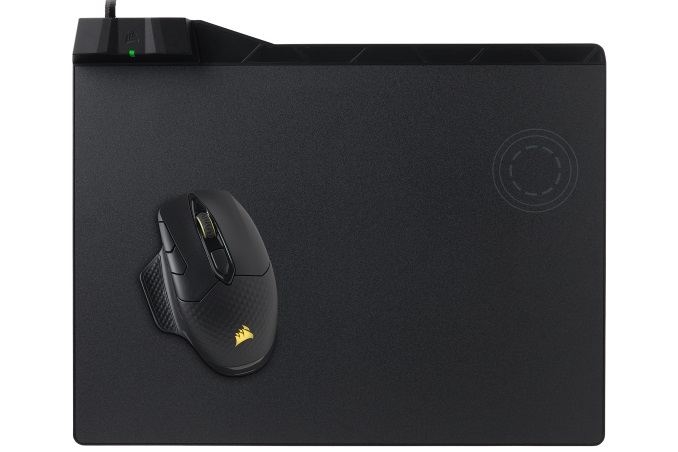
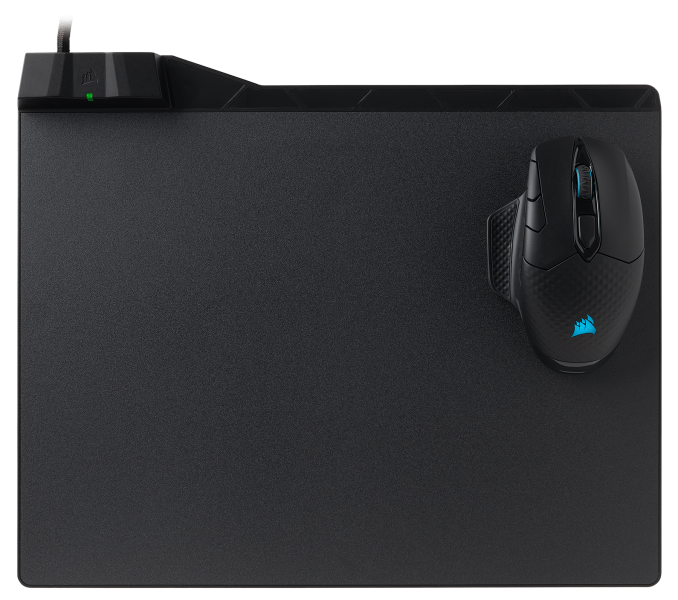
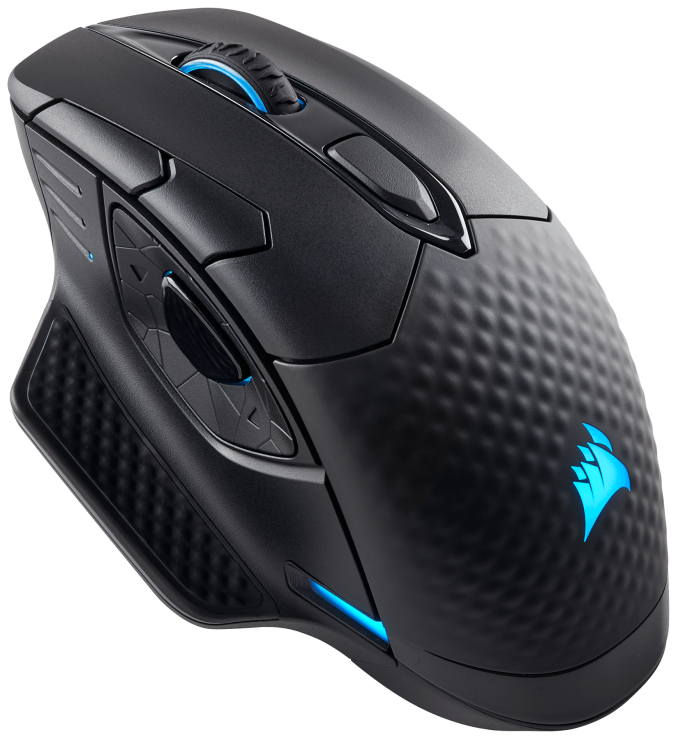


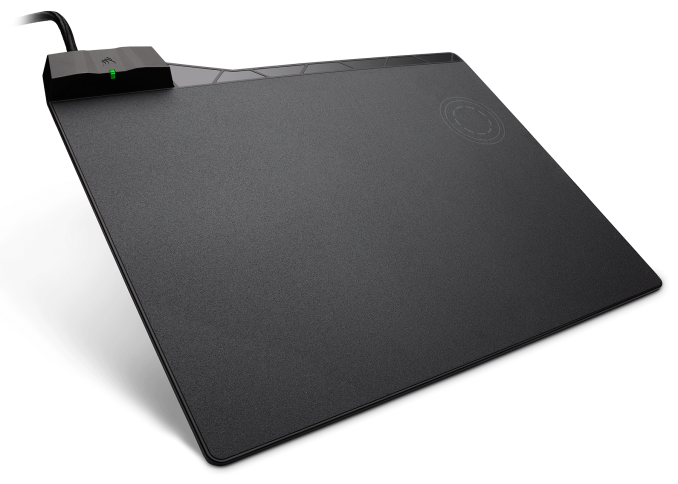

 Quote
Quote


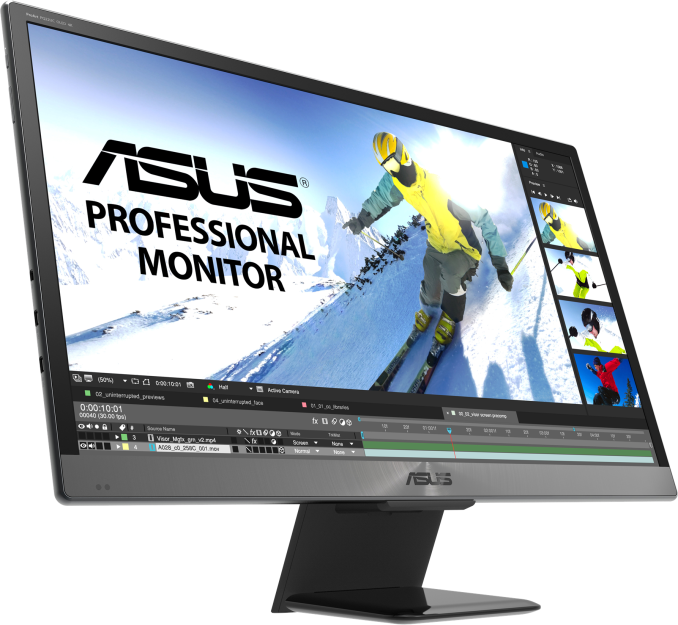

_thumb.png)
_thumb.png)
_thumb.png)
_thumb.png)
_thumb.png)
_thumb.png)
_image_1_thumb.jpg)
_image_2_thumb.jpg)

_(back)_thumb.png)
_(front)_thumb.png)
_(side_left)_thumb.png)
_(side_right)_thumb.png)
_(back)_thumb.png)
_(front)_thumb.png)
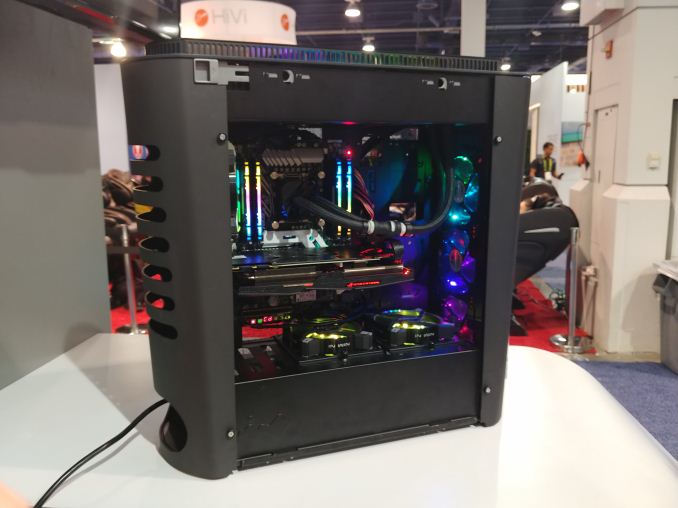

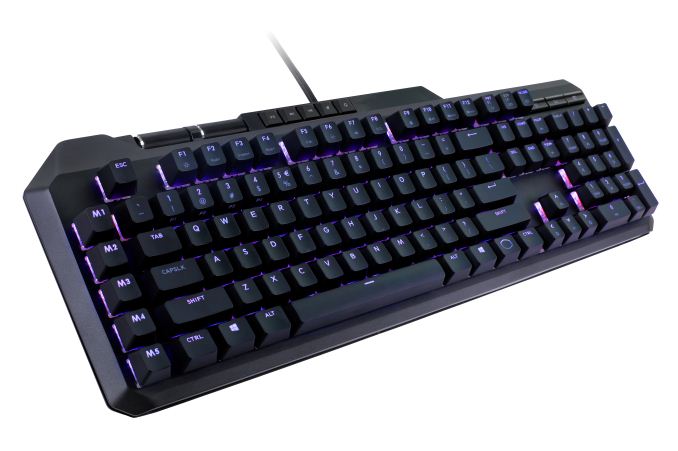
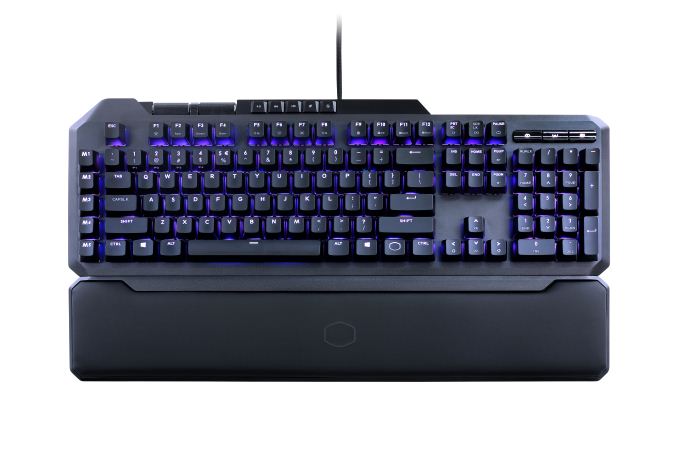
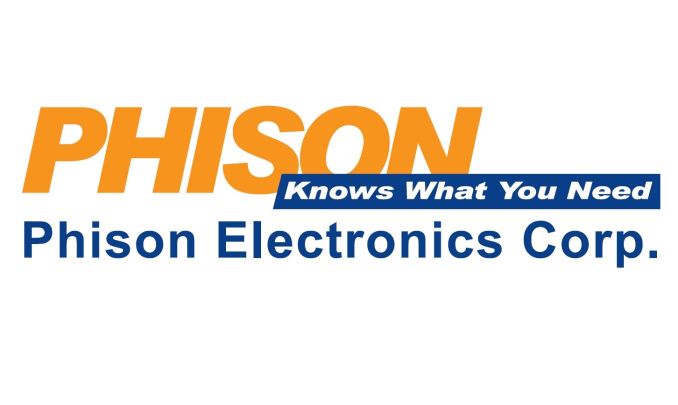
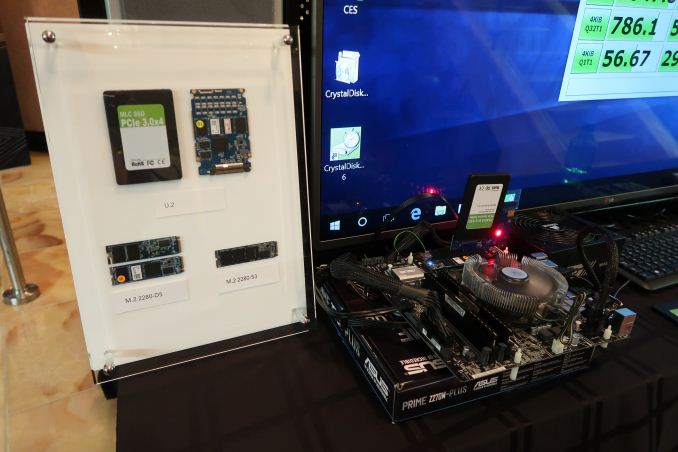

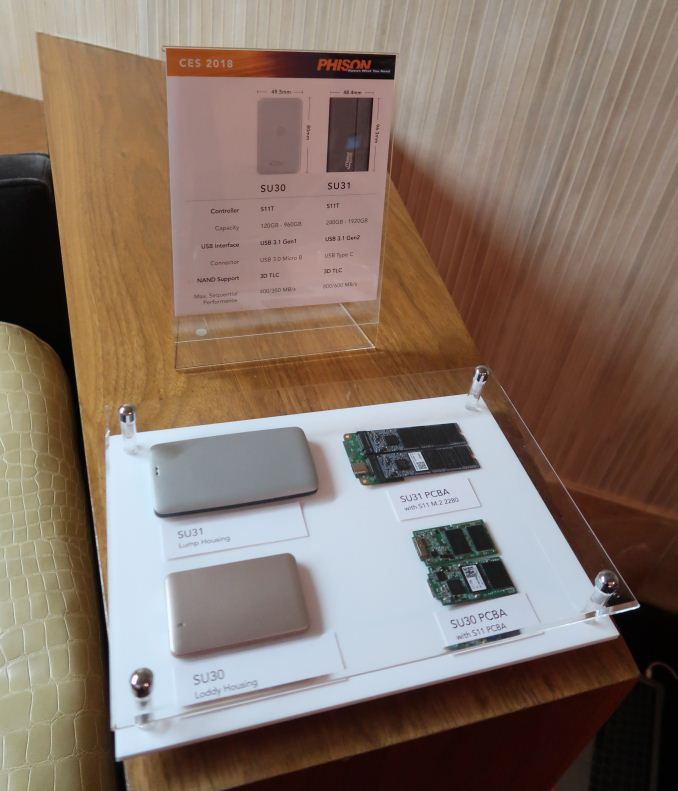
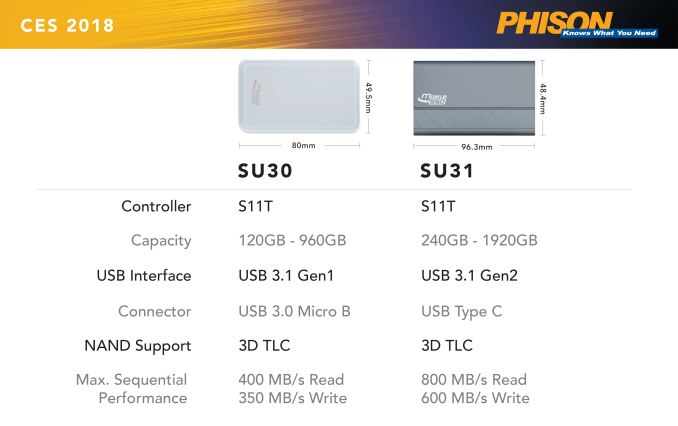


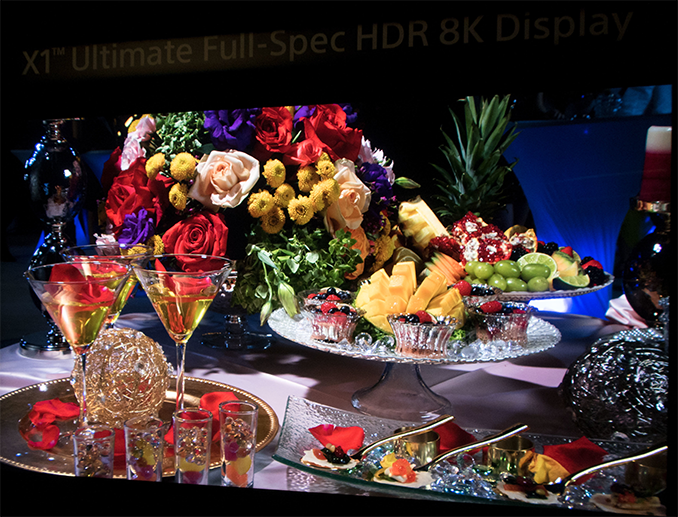

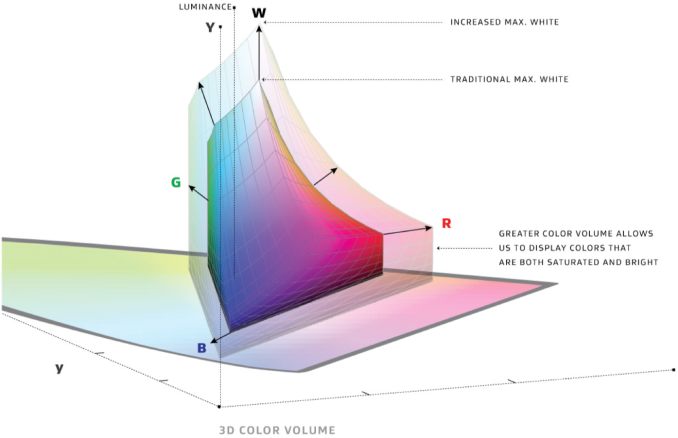
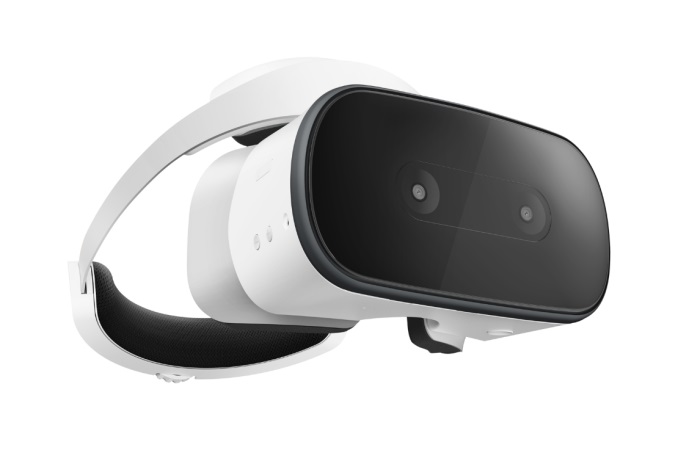
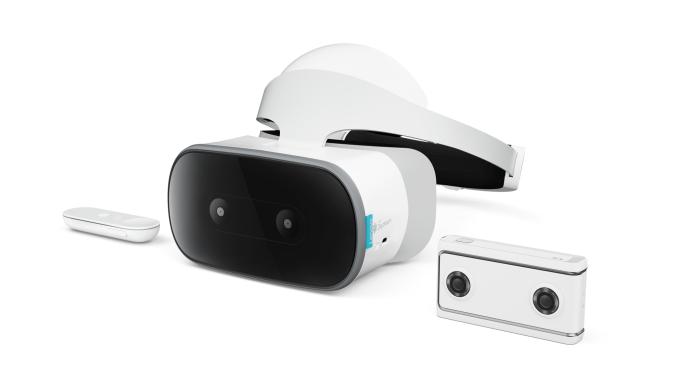
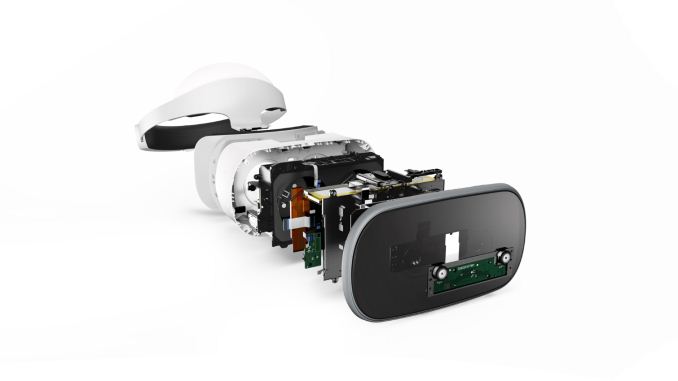
















Bookmarks